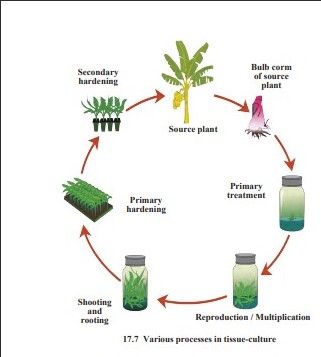CBSE Class 9 Answered
Tell
Asked by Chetan Bhardwaj | 23 Dec, 2013, 11:11: PM
Microbes that cause infections are fungi, bacteria and virus. However, about 85% of all plant diseases are caused by fungi. They spread by means of mycelia.
Bacteria depend on outside agents for dispersal. Quite a few bacterial diseases spread readily by simply touching an infected plant and then by touching a healthy plant. They enter the plant through a wound or natural opening and cannot penetrate the cuticle of plants.
Microbes can also be passed from plants to plants by air currents, through the soil, by water splash, or via any vector species like insects; they have piercing and sucking mouth parts which penetrate the plant surface.
Answered by | 24 Dec, 2013, 01:03: PM
Application Videos
Concept Videos
CBSE 9 - Biology
Asked by rashmij34 | 20 Mar, 2024, 04:46: PM
CBSE 9 - Biology
Asked by bjrathod121 | 18 Jan, 2024, 08:57: PM
CBSE 9 - Biology
Asked by sanjitabehera859 | 03 Dec, 2023, 09:49: PM
CBSE 9 - Biology
Asked by febievangeline612 | 30 Dec, 2022, 09:45: AM
CBSE 9 - Biology
Asked by slaxmibai1982 | 13 Mar, 2022, 12:26: PM
CBSE 9 - Biology
Asked by chhotusingh8279880374 | 02 Apr, 2021, 09:05: PM
CBSE 9 - Biology
Asked by swatipuspapatel | 19 Nov, 2020, 04:30: PM
CBSE 9 - Biology
Asked by gulvejayshree | 19 Nov, 2020, 12:04: PM
CBSE 9 - Biology
Asked by LikithLikith745 | 16 Jul, 2020, 11:03: AM












